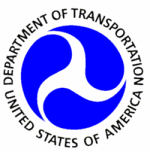Effect Is Most Notable At Smaller Airports
 A report
published last week by the Government Accountability Office (GAO)
finds that flight cancellations have become more likely since the
imposition of a three-hour tarmac delay rule, and that the effects
are most pronounced at airports serving communities of 50,000 or
fewer.
A report
published last week by the Government Accountability Office (GAO)
finds that flight cancellations have become more likely since the
imposition of a three-hour tarmac delay rule, and that the effects
are most pronounced at airports serving communities of 50,000 or
fewer.
According to the report, airlines and other aviation
stakeholders maintain that the tarmac delay rule has changed
airline decision-making in ways that could make cancellations more
likely. To test this claim, GAO developed two regression models,
which controlled for a variety of factors that can cause
cancellations and measured whether the time period following the
imposition of the tarmac delay rule is correlated with an increase
in cancellations.
The two models assessed flights canceled before and after
leaving the gate, for the same 5 months (May through September) in
2009 and 2010. In both cases, GAO found that there was an increased
likelihood of cancellation in 2010 compared to 2009. And, the data
shows that the longer a flight is delayed, the more likely it is to
be cancelled. While a flight at the gate was 24 percent more likely
to be cancelled in 2010 than in 2009, flights sitting on the tarmac
after a delay of between two and three hours were 359 percent more
likely to be cancelled.
 The
GAO report indicates that EU requirements provide airline
passengers with more extensive protections, such as care and
compensation, for flight delays, cancellations, and denied
boardings than do U.S. or Canadian requirements. But these
protections may also increase costs for airlines and passengers.
For example, some airline officials in the United States and the EU
told GAO that increases in the amount of denied boarding
compensation has increased their overall costs. Additionally,
enhanced passenger protections, such as those in the EU, can create
enforcement challenges if regulations are unclear or not
universally enforced.
The
GAO report indicates that EU requirements provide airline
passengers with more extensive protections, such as care and
compensation, for flight delays, cancellations, and denied
boardings than do U.S. or Canadian requirements. But these
protections may also increase costs for airlines and passengers.
For example, some airline officials in the United States and the EU
told GAO that increases in the amount of denied boarding
compensation has increased their overall costs. Additionally,
enhanced passenger protections, such as those in the EU, can create
enforcement challenges if regulations are unclear or not
universally enforced.
The report goes on to state that airports in rural communities
have higher rates of delays and cancellations than airports in
larger communities, but DOT data provide an incomplete picture of
this difference. DOT's data include flights operated by the largest
airlines, representing about 70 percent of all scheduled flights.
GAO analysis of FlightStats data, representing about 98 percent of
all scheduled flights, show more substantial differences in flight
performance trends by community size than DOT data. DOT has
historically not collected data from smaller airlines because of
the burden it could impose on these airlines, but without this
information, DOT cannot fully achieve the purpose of providing
consumers with information on airlines' quality of service.
GAO recommends that DOT collect and publicize more comprehensive
data on airlines' on-time performance and assess the full range of
the tarmac delay rule's costs and benefits and, if warranted,
refine the rule's requirements and implementation. DOT did not
comment directly on the recommendations, but indicated that it
would soon begin a study of the effect of the tarmac delay rule. It
also recommends that the Secretary of Transportation should fully
assess the impact of the tarmac delay rule, including the
relationship between the rule and any increase in cancellations and
how they effect passengers and, if warranted, refine the rule's
requirements and implementation to maximize passenger welfare and
system efficiency.
 In an article in Bloomberg News, FlyersRights.org
founder and president Kate Hanni said she "completely disagrees"
with the finding by the GAO, and DOT spokesperson Olivia Alair
indicated that internal agency analysis has not turned up any
direct correlation between the rule and increased flight
cancellations. She said that, since the rule was imposed, flight
delays of more than three hours have fallen from 693 the year
before it was enacted to 20 the first year it was in effect.
In an article in Bloomberg News, FlyersRights.org
founder and president Kate Hanni said she "completely disagrees"
with the finding by the GAO, and DOT spokesperson Olivia Alair
indicated that internal agency analysis has not turned up any
direct correlation between the rule and increased flight
cancellations. She said that, since the rule was imposed, flight
delays of more than three hours have fallen from 693 the year
before it was enacted to 20 the first year it was in effect.
 ANN's Daily Aero-Linx (04.15.24)
ANN's Daily Aero-Linx (04.15.24) Classic Aero-TV: 'No Other Options' -- The Israeli Air Force's Danny Shapira
Classic Aero-TV: 'No Other Options' -- The Israeli Air Force's Danny Shapira Aero-News: Quote of the Day (04.15.24)
Aero-News: Quote of the Day (04.15.24) Airborne 04.16.24: RV Update, Affordable Flying Expo, Diamond Lil
Airborne 04.16.24: RV Update, Affordable Flying Expo, Diamond Lil ANN's Daily Aero-Term (04.16.24): Chart Supplement US
ANN's Daily Aero-Term (04.16.24): Chart Supplement US





